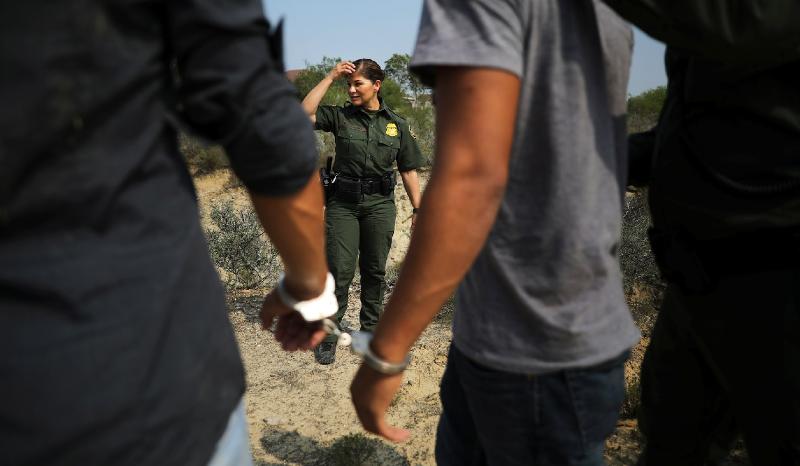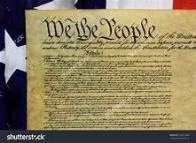Illegal Immigration: 'Losing Control' Explores Politics of Enforcement & Amnesty | National Review
By: Robert VerBruggen (National Review)



The basic narrative of the Immigration Reform and Control Act of 1986 is simple and well-known: Conservatives and liberals compromised, trading an illegal-immigrant amnesty for better enforcement going forward. The amnesty happened; the enforcement did not. The experience has haunted the Right ever since, making further compromises in the same vein incredibly difficult.
Often lost, though, is the story of exactly how the law failed and why it wasn't fixed. Losing Control: How a Left-Right Coalition Blocked Immigration Reform and Provoked the Backlash That Elected Trump , the new book from Jerry Kammer of the Center for Immigration Studies (CIS), fills that gap. It explains decades' worth of developments in the politics and policy of illegal immigration, from the funding of think tanks to the coverage of major newspapers to polls of the general public to votes in Congress. Over all this, the botched 1986 law casts a dark shadow.
The overarching message here is that even as the public clamored for better immigration enforcement, the government was never really serious about it. Presidents occasionally stepped up activity to get good headlines, especially at the border, but neither the executive nor the legislature ever truly had the guts to punish businesses that hired illegal immigrants — the most promising way of actually addressing the problem. Thus the 1986 law was toothless from the beginning, rarely enforced even as well as it could have been, and never fixed with subsequent legislation.
Kammer himself, the resident liberal at the restrictionist CIS, is open to another amnesty-for-enforcement deal, so long as the enforcement promises are credible this time. Reading his own book, one wonders how that could ever possibly come to pass.
The Immigration Reform and Control Act (IRCA) came on the tail end of exhausting, years-long deliberations. Both sides concluded it was the best they could get, even as conservatives chafed at amnesty and liberals resisted a new set of enforcement mechanisms.
On the legalization side, Kammer writes, amnesty was granted not only to "illegal immigrants who had been in the country for five years but also to farm workers who had picked crops for a mere 90 days." On top of that, "when newly legalized workers left the fields to find work elsewhere, the growers would be able to hire 'replenishment workers' who — in another stroke of generosity — would also be put on a path to citizenship."
On the other side, there are two main priorities when it comes to immigration enforcement. One is the border, where the government can stop people from entering the country illegally to begin with. But the other is the workplace: Jobs are the reason most illegal immigrants come, so enforcing the law at work sites can discourage them. Furthermore, roughly half of illegal immigrants come legally and then overstay their visas, so interior enforcement is the only way to address much of the problem.
The 1986 bill did boost border enforcement a bit, but its main promise involved the work site, and that is Kammer's primary focus. The law got rid of the 1952 "Texas Proviso," which held that when an illegal immigrant worked, his employer was legally blameless. Now, workers would have to fill out an "Employment Eligibility Form," the I-9, and provide documentation to show they were allowed to work. Employers who didn't require the forms or accepted obviously fraudulent documents were subject to fines.
Unfortunately, hardly any of this worked well.
Numerous provisions were vulnerable to fraud. For example, it's awfully hard to verify that someone has picked crops for 90 days and thus is eligible for amnesty. As Kammer writes, "because it was common for field workers to be paid in cash, they were allowed to establish eligibility for permanent legal residence by submitting letters from employers. The result was a new industry in which farmers and labor contractors collected $1,000 for one-page letters of attestation."
The I-9s were a joke too. Employers had to accept 29 different forms of ID, but they didn't have to do anything special to make sure the documents were legitimate — not even make sure names were spelled correctly. Illegal workers just had to come up with realistic-looking fake papers, and employers just had to pretend to believe them. Meanwhile, other employers, leery of fines, admitted they sometimes avoided hiring foreigners rather than take the risk. Basically, illegal workers could still get jobs, but legal immigrants faced discrimination.
Even this awful system could be enforced to some degree, with fines levied against employers who couldn't even be bothered to go through the motions. Sometimes that happened, but more often political considerations got in the way. When the Reagan administration "worked on its first budget of the post-IRCA era, it requested far less money for the Immigration and Naturalization Service than Congress had authorized to administer and enforce the law." Politicians who represented areas reliant on illegal labor protested workplace raids. Some enforcement actions were canceled to avoid angering big companies; others were settled for a fraction of what the full fines could have been; still others went sideways, resulting in brutality or the rounding up of legal workers, and gave the entire enterprise of work-site enforcement a bad name.
If anything, the 1986 law expanded illegal immigration by holding out the possibility of further amnesties, and the issue remained strong throughout the 1990s. Yet Congress never fixed the law to deliver on its promise of work-site enforcement. As Kammer notes, even a 1996 law meant to crack down on illegal immigration "produced something akin to a legislative card trick" when it came to the work site. "While legislators authorized 300 additional INS worksite investigators each year for three years, Republicans in control of the appropriations committees blocked funding for those positions."
Meanwhile, elite resistance to immigration enforcement has only hardened in the past few decades. As Kammer details, even the liberal New York Times editorial board once saw the damage that uncontrolled immigration can do. In more recent years, that clarity has disappeared.
Currently, the best hope for work-site enforcement is E-Verify, a computer program that checks a worker's I-9 information against other databases to ensure it's legitimate. E-Verify is currently optional but could be made mandatory. As Kammer writes, however, even the Trump administration has not really treated this as a priority. And as I've noted before, the program is very difficult to work into an immigration compromise these days: Thanks to the legacy of the 1986 law, conservatives would like to see E-Verify made mandatory and proven effective before an amnesty takes place — but this would make life very hard for illegal immigrants until the amnesty came through, likely with many leaving the country, a result that liberals won't countenance.
The only way to reach a grand bargain is to trade amnesty for enforcement. But last time, this meant amnesty without enforcement, and conservatives are not about to be fooled again.

ROBERT VERBRUGGEN is a policy writer for National Review .





